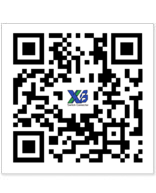Comprehensive Analysis of XLR Connectors: Technical Characteristics, Application Fields, and Selection Guidelines
Publisher: Administrator Date:2025-02-24
1. Overview
The XLR connector (commonly called "Cannon connector") is a multi-pin circular connector widely used in professional audio, lighting control, and industrial applications. Renowned for high reliability, EMI resistance, and durability, its name originates from Cannon Electric's "X-series" products, with subsequent versions incorporating Latch mechanisms and Rubber seals (hence XLR).
2. Technical Specifications
-
Shielding: Full metal shell + twisted pair design (effective against EMI/RFI)
-
Contact Resistance: ≤10 mΩ (gold-plated contacts)
-
Insulation Resistance: ≥500 MΩ (ambient temperature)
-
Voltage Rating: 1.5 kV (between contacts)/3 kV (contact-to-shell)
-
Mating Cycles: ≥5,000 (IEC 61076-2-103 compliant)
-
Locking Mechanism: Spring-loaded latch (prevents accidental disconnection)
-
IP Rating: IP67/IP68 (waterproof models)
Environmental Tolerance
-
Temperature Range: -40°C to +85°C (industrial grade)
-
Corrosion Resistance: Nickel-plated shell + rubber seals (suitable for humid/saline environments)
3. Types & Configurations
By Pin Count
-
3-Pin (XLR3): Standard balanced audio (microphones, mixers)
-
4/5-Pin: Lighting control (DMX512 protocol), multi-channel audio
-
7-Pin: Hybrid power+signal transmission (e.g., phantom power for tube microphones)
By Gender
-
Male: Pinned connector (typically signal output)
-
Female: Receptacle connector (typically signal input)
Special Variants
-
Waterproof: Stainless steel shell + rubber seals (outdoor use)
-
Mini XLR: Compact design (e.g., Tascam devices)
4. Materials
Housing
-
Metal: Zinc/aluminum alloy (EMI shielding, impact resistance)
-
Plastic: Nylon/ABS (lightweight, cost-effective)
-
Gold-Plated: Audio signals (low resistance, oxidation-resistant)
-
Silver/Nickel-Plated: Industrial control (high-current applications)
Insulators
-
PBT/PEEK: Heat-resistant, flame-retardant (UL94 V-0 certified)
5. Applications
-
Professional Audio: Microphones, mixers, amplifiers (balanced signals)
-
Lighting Control: DMX512 lighting systems (XLR5)
-
Industrial: Sensor/Instrumentation connections
-
Medical: High-precision imaging equipment
6. Soldering & Cable Compatibility
Recommended Cables
-
Audio: Shielded twisted pair (e.g., Belden 8451, 22-24 AWG)
-
Industrial: Multi-core shielded cable (≥50N tensile strength)
Soldering Guidelines
-
Temperature: 350±20°C (lead-free solder)
-
Duration: ≤3 seconds per joint
XLR3 Pinout
|
Pin
|
Function
|
|
1
|
Ground (shield)
|
|
2
|
Signal+ (hot)
|
|
3
|
Signal- (cold)
|
7. Selection Guide
Key Considerations
-
Signal Type: Balanced/unbalanced audio, digital, power delivery
-
Environment: IP rating, corrosion resistance
-
Durability: Mating cycles, cable strain relief
Recommended Brands
-
Premium: Neutrik (CH), Switchcraft (US)
-
Budget: Amphenol (US), JST (JP)
Cost Optimization
-
Use plastic housing for fixed installations
-
Prioritize gold-plated contacts + metal shells for frequent mating
8. Comparison with Other Connectors
|
Feature
|
XLR
|
TRS (6.35mm)
|
RCA
|
|
Noise Immunity
|
High (balanced)
|
Moderate
|
Low
|
|
Durability
|
≥5,000 cycles
|
~1,000 cycles
|
~500 cycles
|
|
Typical Use
|
Pro audio
|
Instruments
|
Consumer audio
|
9. Troubleshooting & Maintenance
|
Issue
|
Solution
|
|
Intermittent Signal
|
Clean contacts with anhydrous alcohol
|
|
Latch Failure
|
Replace spring or entire connector
|
|
Cable Damage
|
Maintain ≥5x cable diameter bend radius
|





 0769-82056828
0769-82056828 



 Add me as a friend
Add me as a friend  Add me as a friend
Add me as a friend  Add me as a friend
Add me as a friend  Add me as a friend
Add me as a friend  Add me as a friend
Add me as a friend  Website
Website